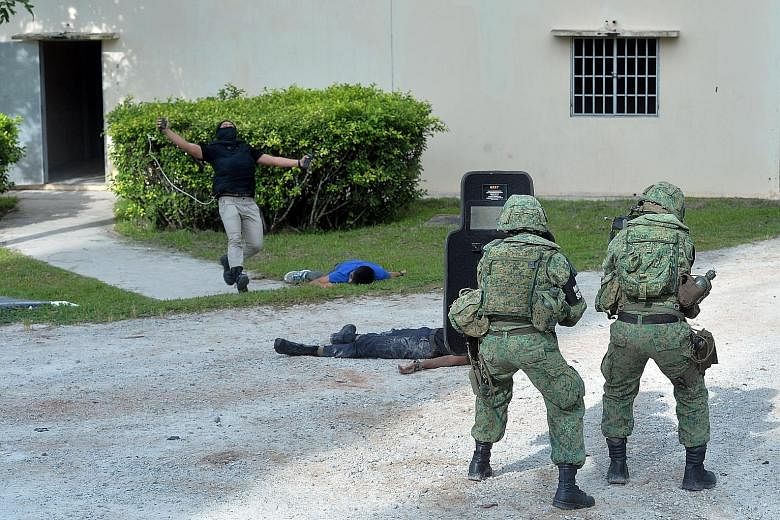Fitness training for soldiers will in future be more targeted, and tailored to suit the specific army vocation they are in.
Also known as vocation fitness training, it is based on the rationale that soldiers in different vocations perform different tasks, which require the use of certain muscle groups.
So the fitness training regime for an infantry soldier, for example, may focus on building, among other areas, strength and agility based on the tasks the infantry needs to be proficient in.
This is among several developments that the army is looking to establish, as it navigates challenges such as manpower constraints, said army chief Melvyn Ong on Wednesday.
It comes as the army looks into improving injury prevention among its soldiers, as well as the rehabilitation of injured servicemen, said Major-General Ong in a media interview ahead of SAF Day yesterday.
To redesign the fitness training curriculum, the army will set up a Centre of Excellence for Soldier Performance.
Its tasks include reviewing fitness programmes and the design of training equipment to suit a soldier in a particular vocation.
A trial of the vocation fitness training, done with the 4th Battalion, Singapore Infantry Regiment, has found that it resulted in very high injury prevention among the soldiers, said Maj-Gen Ong, 41, who took over as army chief last year.
"There is some success to date on this and we want to continue doing this," he said.
"We want to make sure that everybody counts, and our commanders all understand that every soldier is a valuable resource."
To make up for the shrinking manpower pool due to falling birth rates, the army is tapping new technology to do more with fewer people. In future, there may even be unmanned ground vehicles assisting with camp patrols.
However, Maj-Gen Ong cautioned that technology is a double- edged sword. "It is necessary for the things that we need to do, and to overcome some of the manpower limitations.
"But... it is also a limiter because, sometimes, you want to move faster, but technology does not allow you to move as fast."
The army will also be more motorised and networked, said Maj-Gen Ong, allowing it to fight at a higher tempo.
"You get information, you move. This is a very good way of fighting, because you are always faster than the enemy."
Training areas in the western part of Singapore will be optimised to improve training realism.
Currently, plots of training land there may be used for various purposes.
In future, these will be connected as a battle circuit, allowing motorised forces to train on a larger scale.
Besides the local training areas, the army also uses simulation and overseas spaces.
Maj-Gen Ong also highlighted the growing threat of terrorism, and spoke on some things that are being done to tackle this, among them, the setting up of a new unit, the Army Deployment Force.
In addition, an Island Defence Training Institute will be set up to prepare full-time national servicemen and operationally ready national servicemen to take on a wider range of security tasks. These tasks include joint patrols with the police during heightened threat conditions.
But even as more is being done to strengthen the army's training system, Maj-Gen Ong stressed the importance of every soldier.
"Every soldier counts," he said. "So when they come in, we need to give them a meaningful experience."


